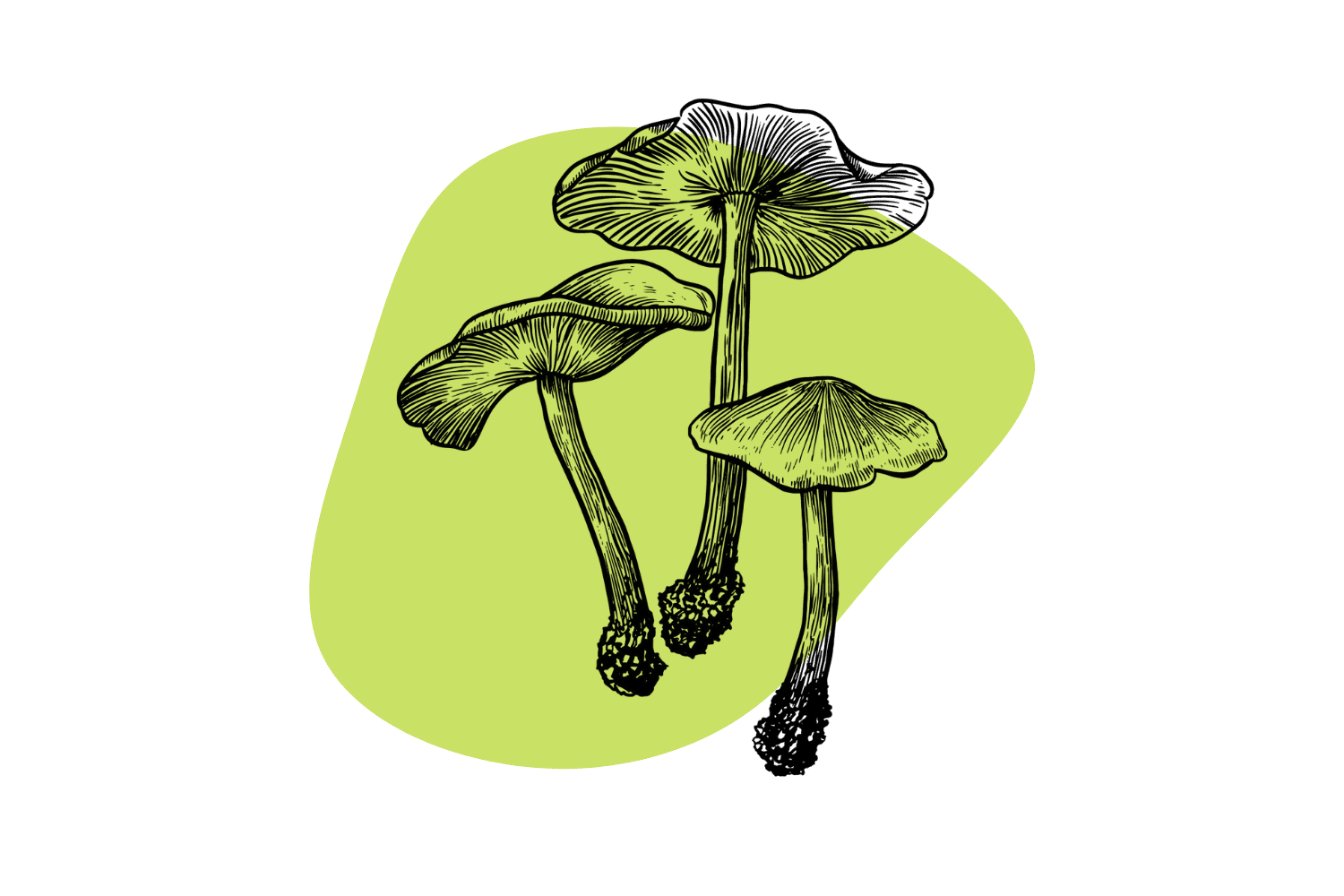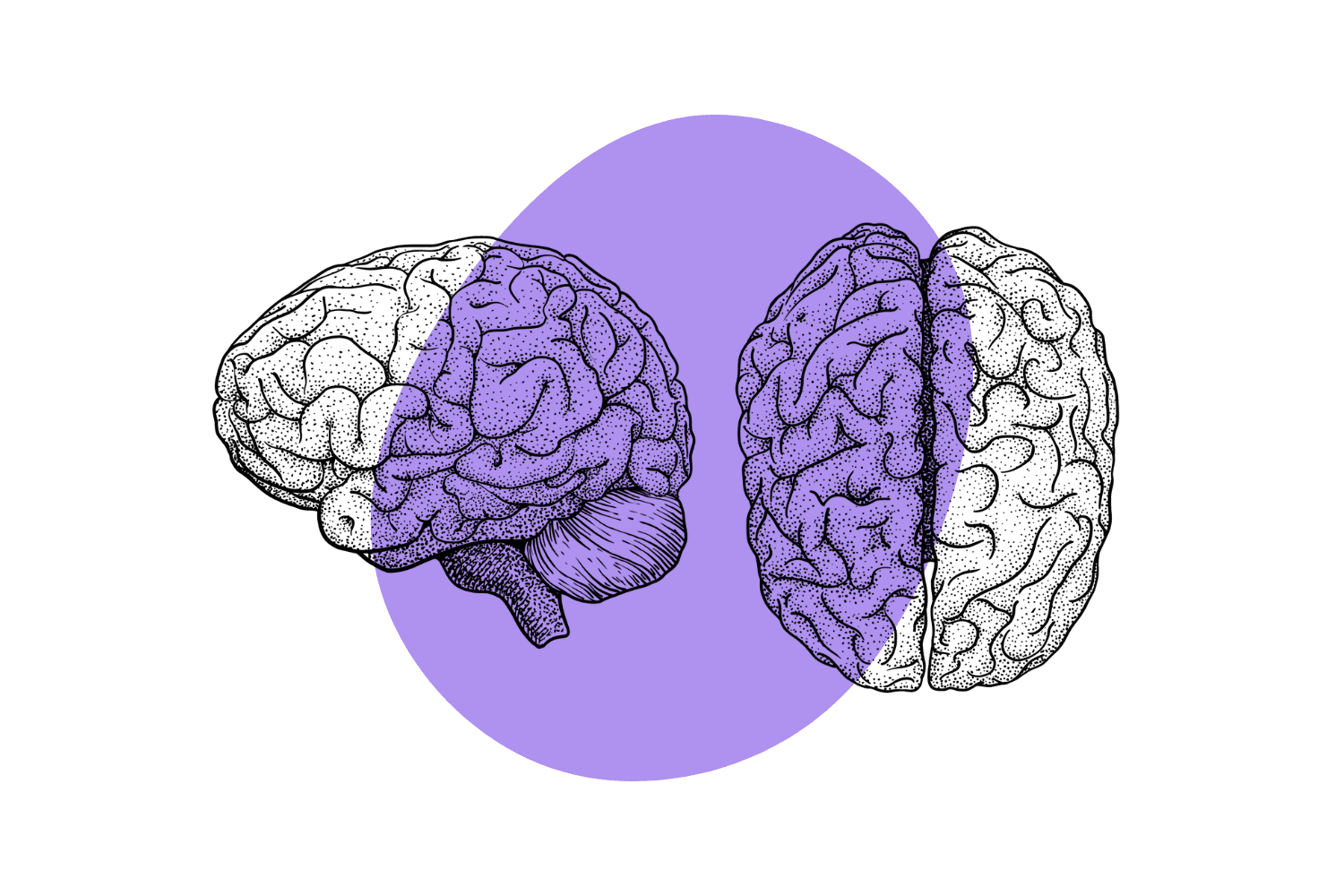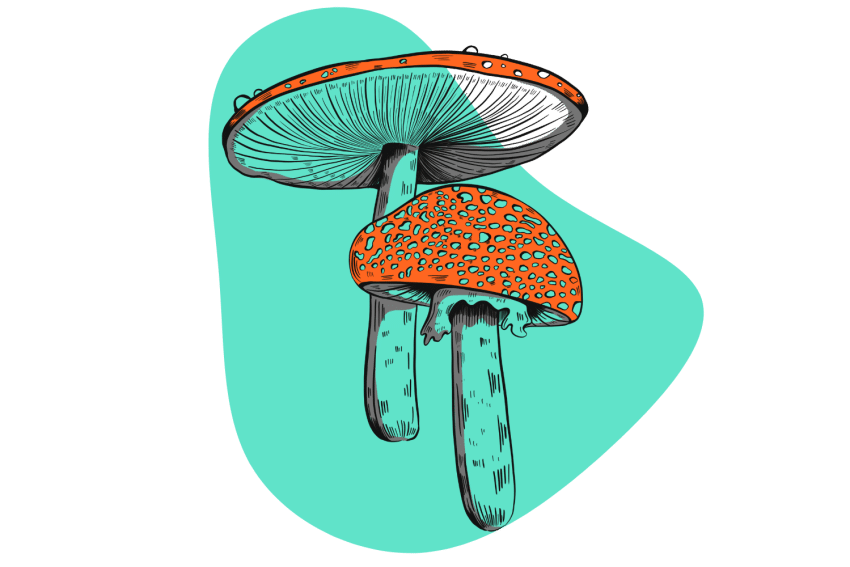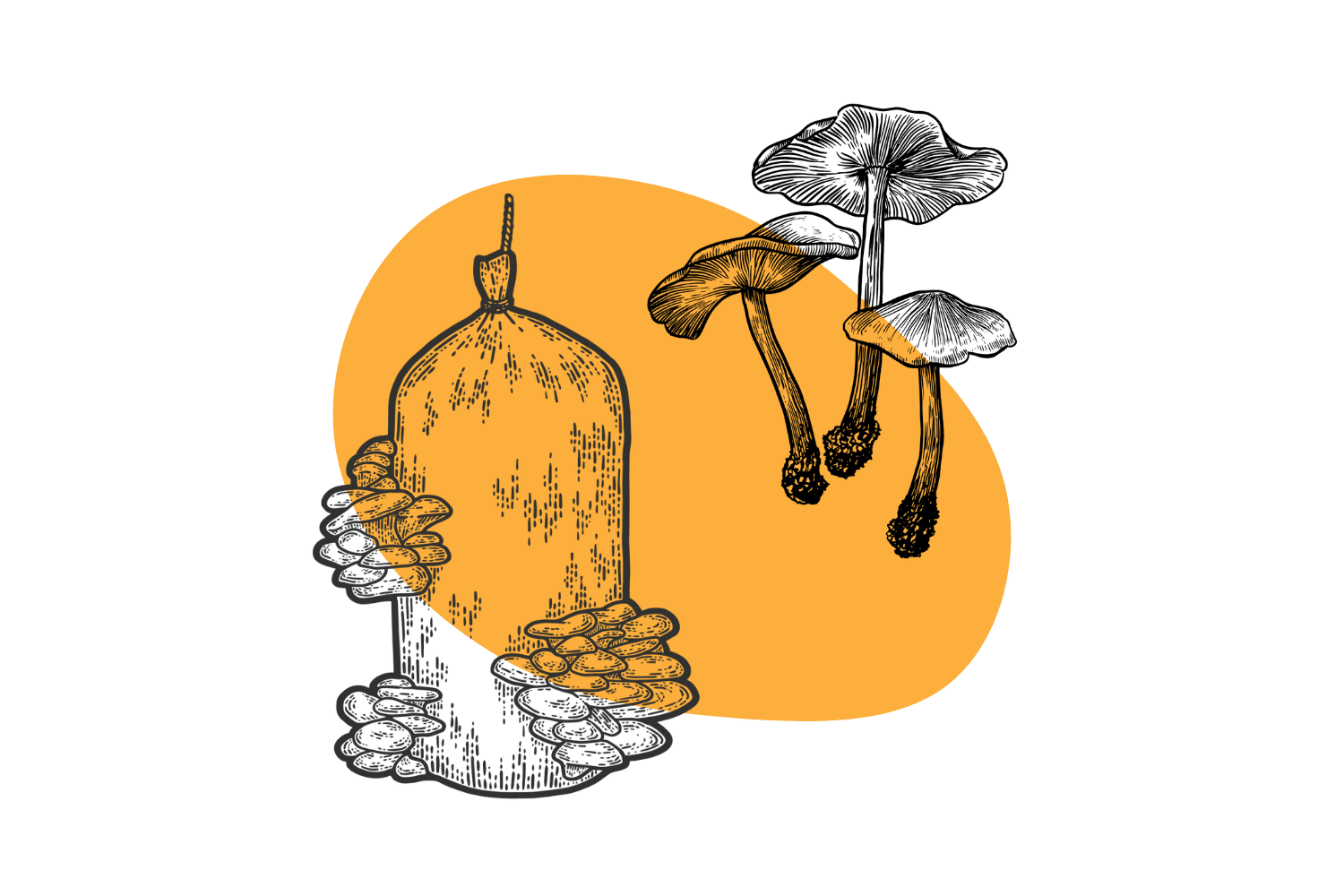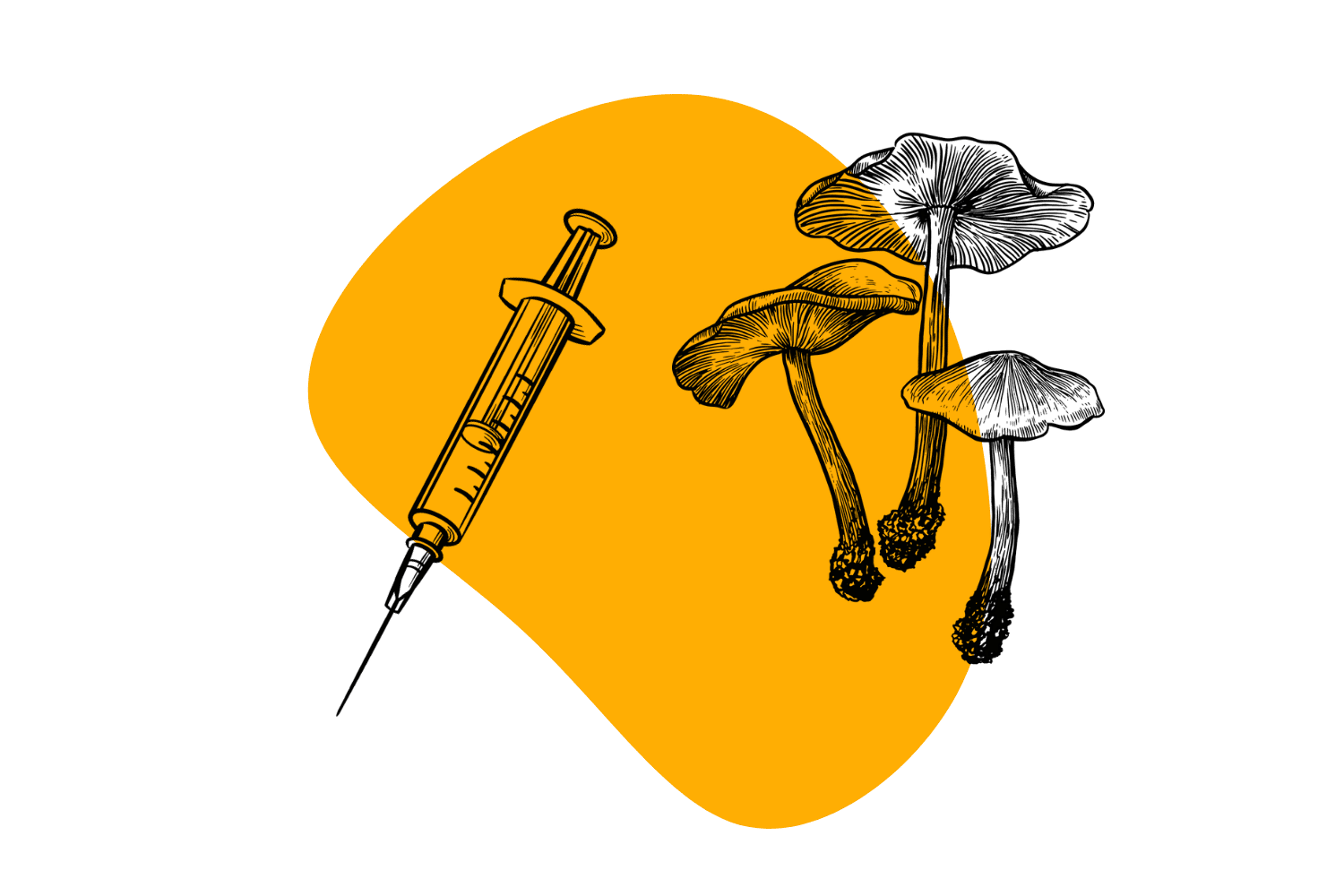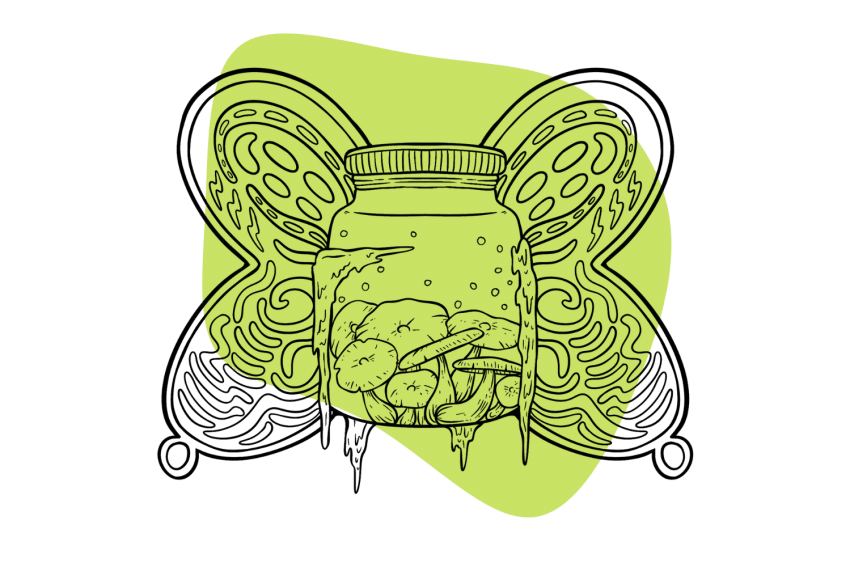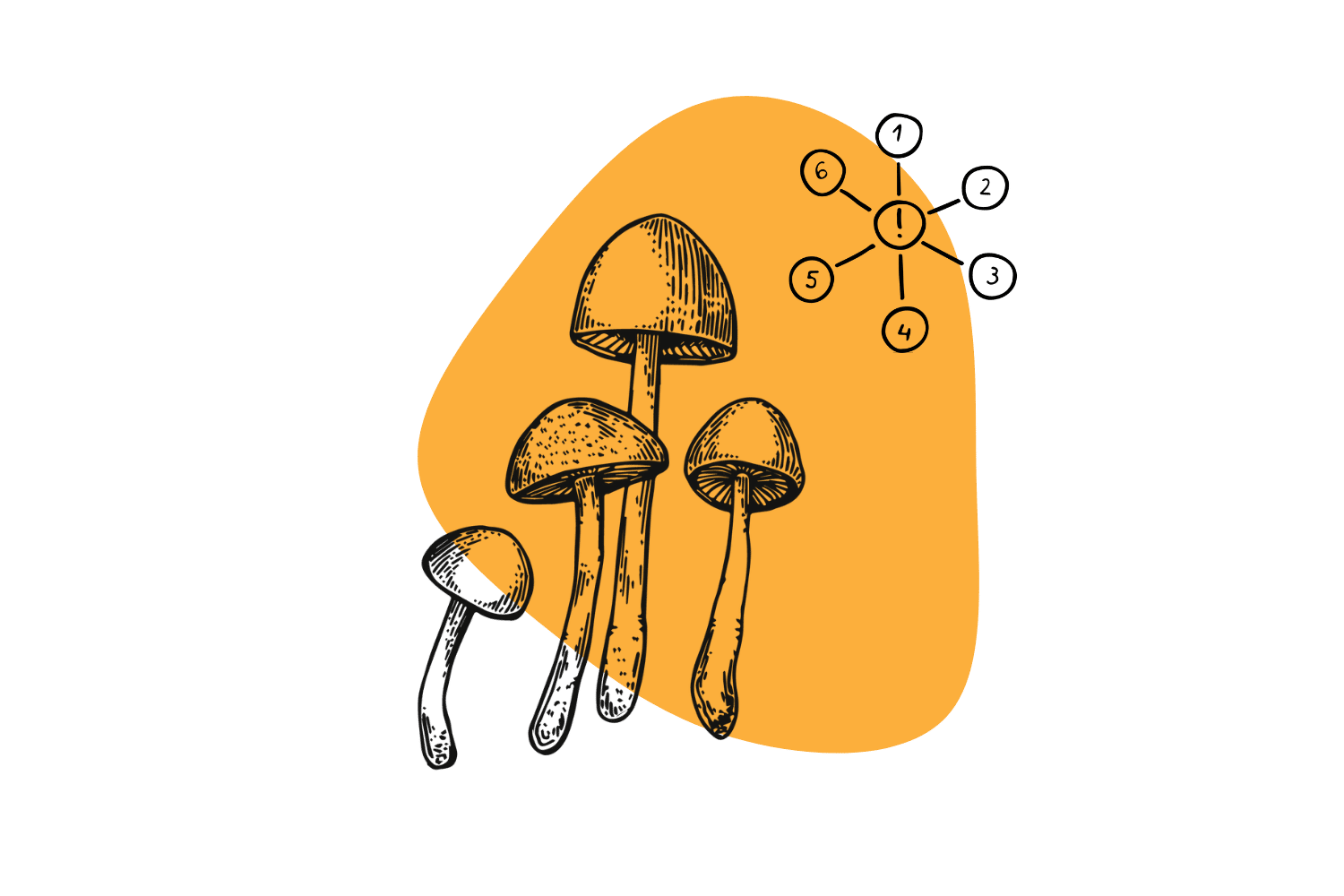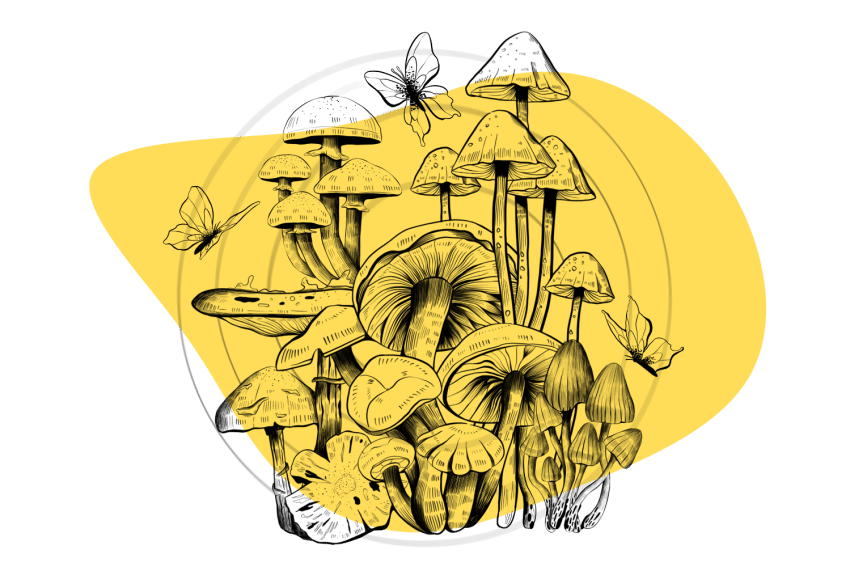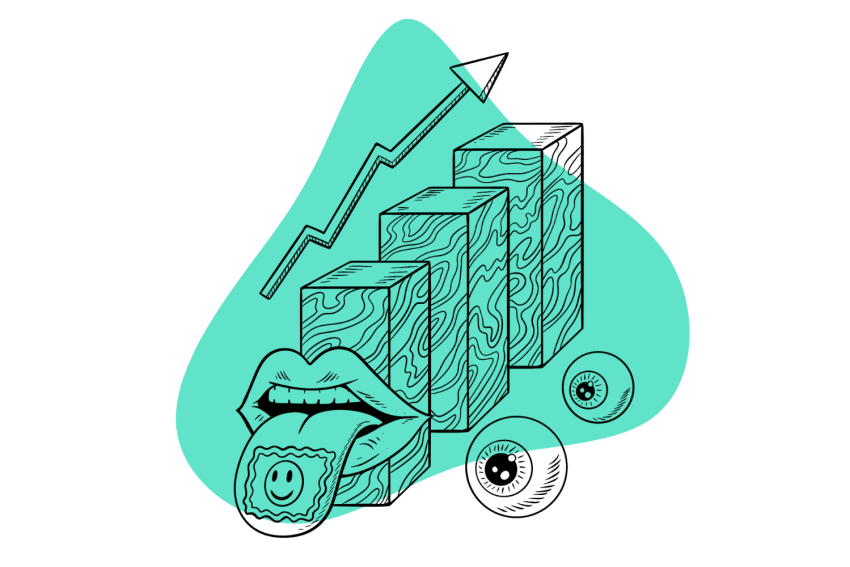Psilocybin For Anxiety: Current Research & Understanding
Studies suggest macrodosing magic mushrooms work better for treating anxiety than microdoses. Here’s what you need to know.
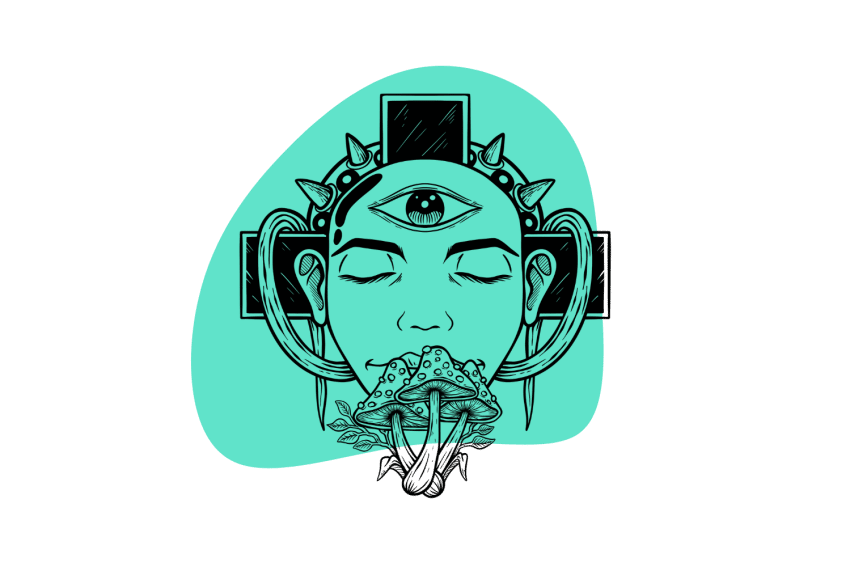
Magic mushrooms seem mainstream today, but it wasn’t long ago we had a heavy stigma over them.
Whether he was initiating the movement of psychedelics into “normie” culture or simply riding the wave, Michael Pollen’s Book How to Change Your Mind showcases this motion well.
For him — and many — one of the deciding factors in “changing his mind” was a 2016 study on psilocybin and existential anxiety. Researchers reported a 60-80% improvement in anxious and depressive symptoms lasting a full 6.5 months after treatment [1].
But this is only the beginning.
Research on Psilocybin for Anxiety
This wasn’t the first study on psilocybin, but it was profound. In it, researchers took 29 patients with life-threatening cancer resulting in anxiety and depression and randomly designated groups to receive two doses of psilocybin.
Though the group size was small — only 12 participants took both doses of psilocybin — it was nonetheless promising. In the concluding section, the authors state:
For each of the six primary outcome measures, … there were significant differences between the experimental and control groups … with the psilocybin group (compared to active control) demonstrating immediate, substantial, and sustained … clinical benefits in terms of reduction of anxiety and depression symptoms.
Bear in mind these were all participants facing life-ending illnesses. Despite their anxiety and depression in dealing with death itself, here they are, finding hope in their experience with mushrooms.
Microdosing Mushrooms for Anxiety
Microdosing = small, sub-perceptual doses, usually between 50 and 200 milligrams.
Microdosing has become a popular — albeit controversial — way to take magic mushrooms. This involves taking sub-perceptible amounts of the mushrooms without a desire to feel the hallucinogenic effect.
While it won’t cause you to start tripping, anecdotal reports claim the practice has myriad benefits. This includes an elevation of mood and concentration, enhancements of creativity, increased energy, and more [2].
Increasing energy and elevation of mood have commonalities with anxiety treatment. Some study participants explicitly stated these changes as their reason for feeling better after microdosing. Others found microdosing increased their anxiety levels rather than lower them.
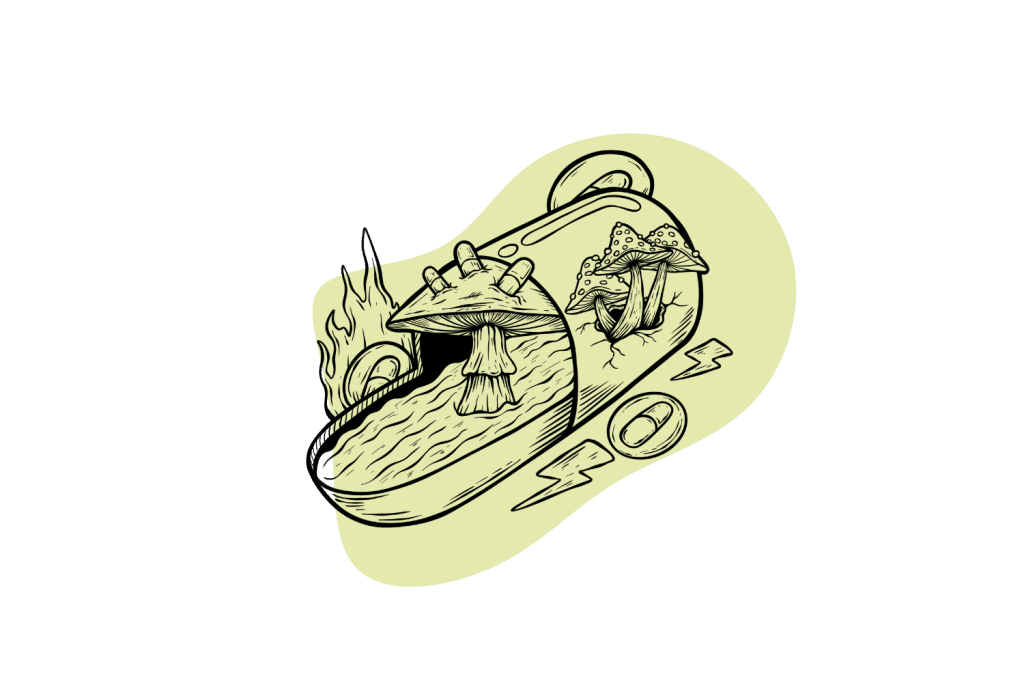
Despite anecdotal reports, one research report found a slight improvement in the anxiety levels of microdosers compared to a placebo [3]. Though this was the most extensive double-blind research into the subject, it wasn’t without its flaws.
For starters, participants had to secure their drug of choice, there was no restriction on the drug they could use, and there was no way to ensure they followed protocol. The new protocol had participants put their microdose and placebos into capsules, put the capsules into envelopes with QR codes, and shuffle them.
While innovative, this is far from perfect, and prohibition continues to make these studies extremely difficult.
It’s possible that microdosing does little more than represent an intentional act of self-love we perform, causing our body to match our expectations. It’s also possible for further research to find the opposite is true, and we’ll discover real-life applications down the line for it.
Related: Understanding the Link Between Existential Anxiety & Doomerism.
Macrodosing Mushrooms for Anxiety
Macrodosing = large, psychoactive doses, usually between 2 and 5 grams.
Far more research considers — and consequently supports — the concept of taking medium or large doses of mushrooms for anxiety. One of the studies mentioned above was a fantastic start to the topic, showcasing how anxiety around death itself could be overcome with mushrooms [1].
Mushrooms combined with therapy have the potential to be incredibly effective for conditions like anxiety mainly because mushrooms can help people look inward towards their subconscious selves as opposed to covering up symptoms like conventional therapies.
Instead of simply not feeling anxious anymore, mushrooms — and other psychedelics — ask the user why they feel this and whether it’s healthy to do so. In another study, researchers discovered large doses are more beneficial than small, “placebo-like” ones [4].
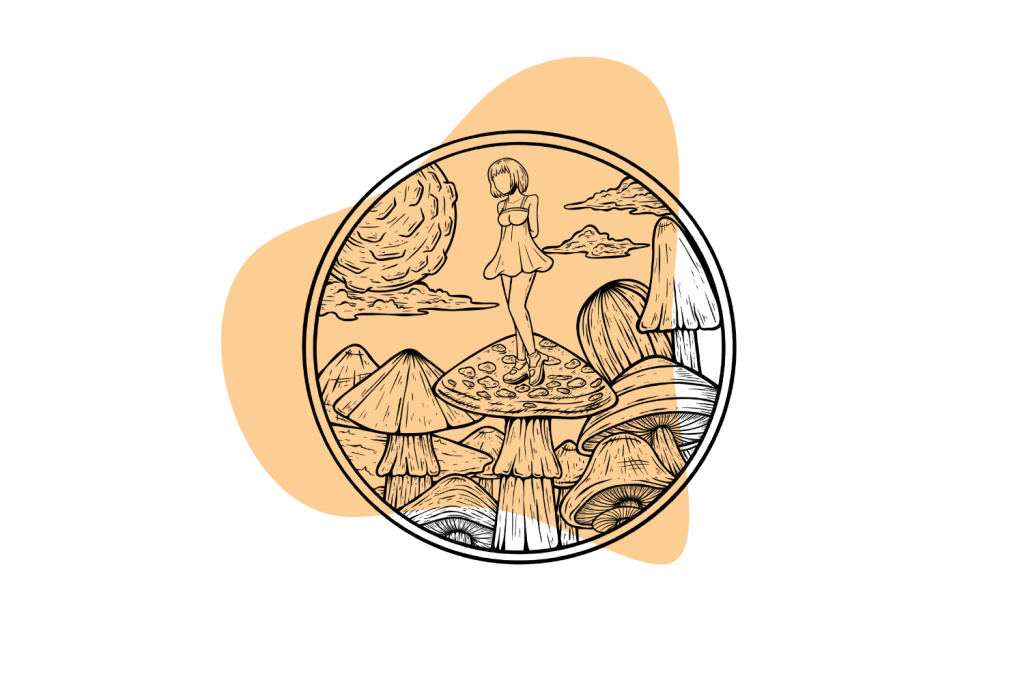
“Clinically significant responses” in larger doses happened in 70-80% of participants as opposed to under 30% of the smaller dose.
This indicates that the psychedelic experience and hallucinatory states may be necessary for the drug’s effectiveness. This is another central question researchers are trying to answer, but studies like this seem to point toward yes.
This doesn’t mean psychedelics are sure to cure anxiety. These studies all look at the drug’s effectiveness in combination with therapy. We don’t yet know how big a role the therapeutic element plays, but we do know using psychedelics alone — especially if you suffer from anxiety — can be dangerous.
Therapists help participants to work through moments of grief, anger, and anxiety while they’re on psilocybin, and this is important.
What Causes Anxiety Disorders?
There are many different kinds of anxiety disorders — differentiated by both the presentation of symptoms and the source of the anxiety:
- Generalized Anxiety Disorder (GAD) — characterized by excessive and unrealistic worry about everyday events and activities. People with GAD often feel anxious most days and have difficulty controlling their worry.
- Panic Disorder — characterized by recurrent, unexpected panic attacks and fear of having another attack. Panic attacks are sudden episodes of intense fear or discomfort that can include physical symptoms such as a racing heart and difficulty breathing.
- Social Anxiety Disorder (SAD) — characterized by intense fear and avoidance of social situations and interactions. People with SAD may fear being judged or embarrassed in social situations.
- Specific Phobias — characterized by intense fear and avoidance of specific objects or situations. Examples include fear of heights (acrophobia), fear of closed-in spaces (claustrophobia), and fear of animals (zoophobia).
- Obsessive-Compulsive Disorder (OCD) — characterized by recurrent, unwanted thoughts (obsessions) and repetitive behaviors (compulsions) that the person feels driven to perform.
- Post-Traumatic Stress Disorder (PTSD) — characterized by re-experiencing, avoidance, negative changes in mood and cognition, and hyperarousal symptoms following exposure to a traumatic event.
- Acute Stress Disorder — characterized by severe anxiety, dissociation, and other symptoms that occur within a few or weeks days of a traumatic event.
- Separation Anxiety Disorder — characterized by excessive anxiety when separated from an attachment figure.
Everybody experiences some degree of anxiety — you don’t need to be diagnosed with an anxiety disorder to suffer from anxiety. Everyday life is full of things capable of triggering anxious feelings or even panic and paranoia.
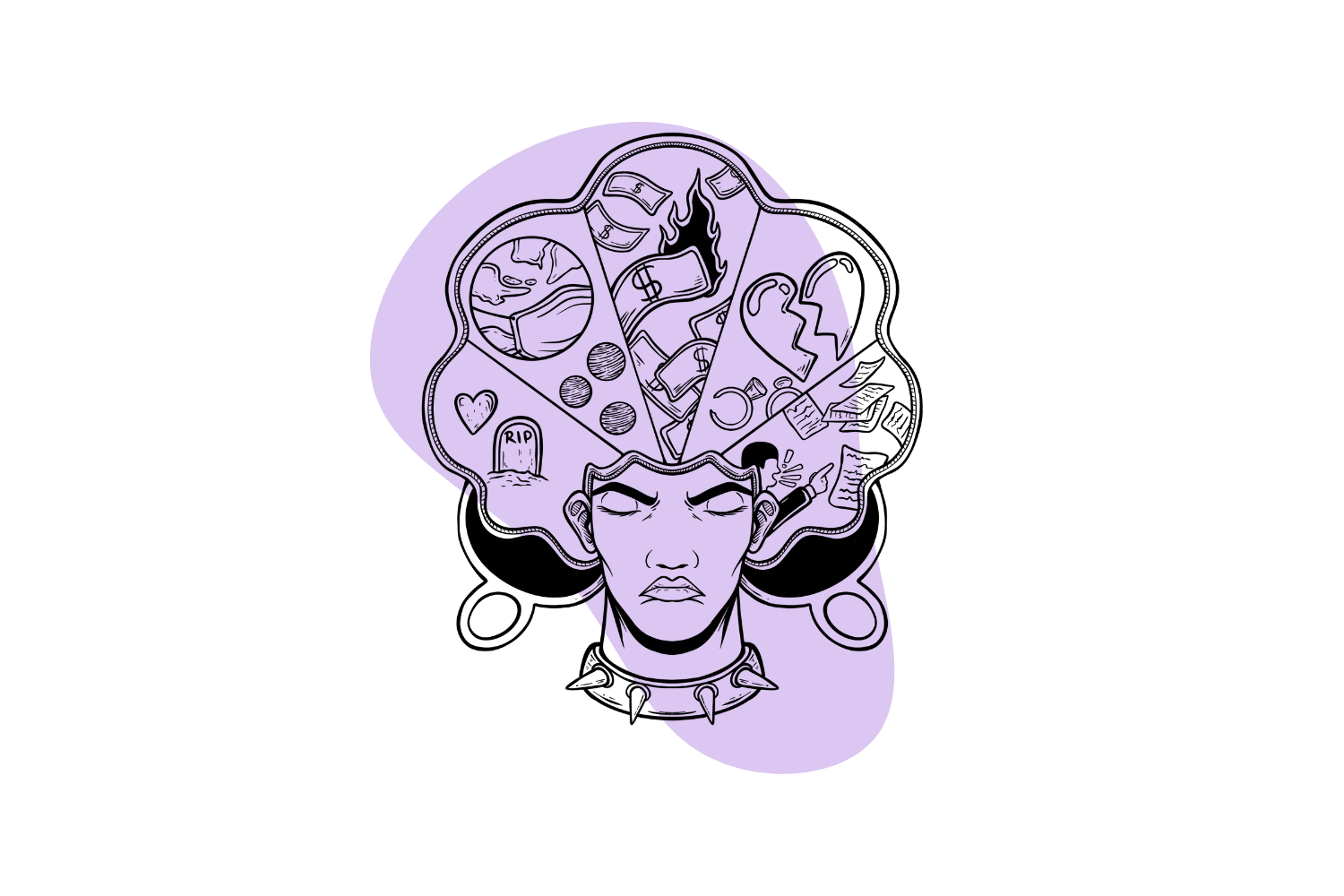
This becomes a disorder rather than a normal feeling when it becomes frequent, intense, and/or debilitating.
Anxiety disorders can manifest as the following:
- Difficulty concentrating or stopping yourself from fixating on the anxious feelings
- Elevated heart rate and rapid breathing
- Feelings of tiredness or exhaustion
- Gastrointestinal distress
- Nervousness or fear of danger or thinking doom is right around the corner
- Sweating/clammy skin
- Trembling hands
Anything is capable of triggering these feelings, but anxiety disorders often come as a result of various life events. This could include work, finances, personal relationships, etc.
With anxiety disorders, the activating of these feelings can be overwhelming and hard to overcome. Those suffering might find themselves unable to move on from fixating on the topic driving the feelings of anxiety.
The result, many times, is a panic attack resulting in shaking, debilitating paranoia, and more. These are episodes of anxiety where the sufferer may find themselves unable to move or having difficulty breathing.
How Psychiatrists Treat Anxiety
The most common medications for anxiety are the benzodiazepine class of drugs. These medications— like Xanax, Valium, Klonopin, and others — operate by boosting the binding capability of the GABA-A receptor [5].
Benzodiazepines have a potent anxiolytic and sedating effect, along with the potential for some side effects in larger doses, including:
- Blurry vision
- Dizziness
- Hostile/erratic behavior
- Impaired coordination
- Mood swings
- Slurred speech
Another common drug operating through the GABA-A receptor is alcohol [6]. While the effects are different, you can see how the outcomes of each line up when used in excess. High doses of benzodiazepines even produce an almost alcohol-like intoxication. However, this is often superseded by a strong desire to sleep — forgetting most or all of the events from the day prior.
There are quite a few people who — knowingly or unknowingly — use alcohol as a self-medication for anxiety because of this effect on GABA.
NOTE: Using benzodiazepine drugs with alcohol or other depressants can be extremely dangerous. The combined effect of these drugs can cause overdose and death more easily than either drug used on its own.
In some cases, this can result in respiratory depression, where a person’s breathing gets shallow to the point of ceasing altogether.
How Do Mushrooms Help with Anxiety?
There are two important factors in the mechanism of action for psilocybin with anxiety. These are the subjective experience — or the trip — and the molecular action. At this time, there’s no way to know which is most important or if there’s a requirement for both to be effective.
As the subjective experience goes, many would agree this is incredibly important. One study involving psilocybin use on 36 adults who had never had hallucinogens observed some remarkable results [7].
During the 14-month follow-up, researchers found 67% of participants rated it “among the five most spiritually significant experiences of their lives.” Of them, 17% said it was the single most significant.
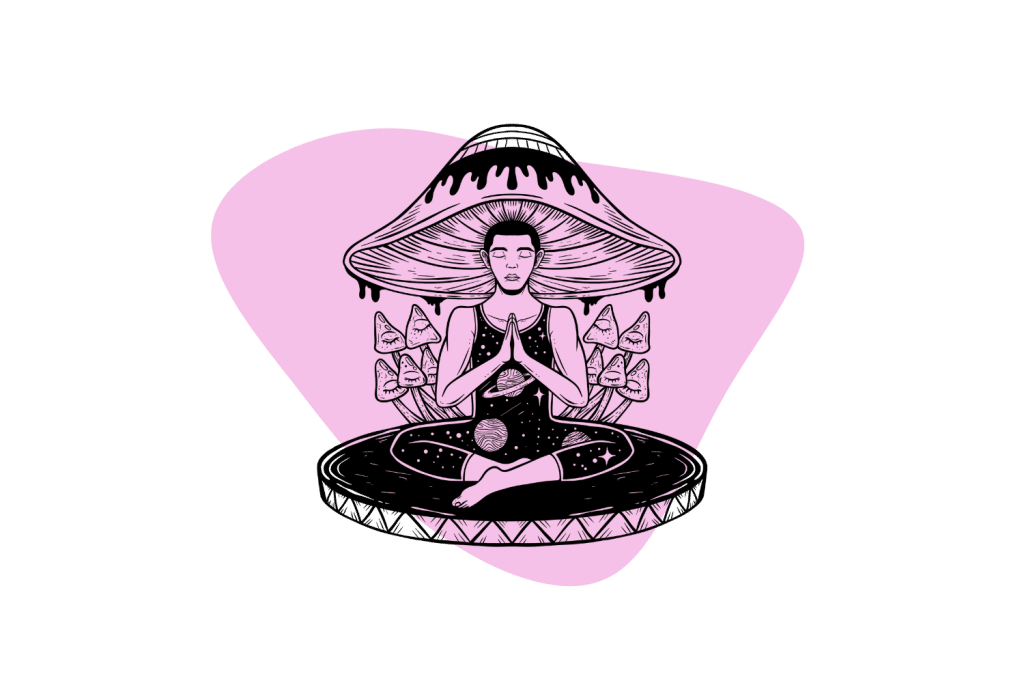
Make no mistake; this is a massive motivator for change. Check out some comments from volunteers of the study researchers included in the report:
In every horrible experience or frightening experience, if you stay with it, enter into it, you will find God. That the horror is, in reality, only an illusion, and God lies beneath it all. It has become a guiding principle in my life.
The experience expanded my conscious awareness permanently. It allows me to let go of negative ideas faster. I accept “what is” easier.
These comments highlight the role of the spiritual elements of a psychedelic experience. These volunteers noted their ability to resolve fear and negativity through new means, thanks to the lessons of their hallucinations.
If you remove this element, you might have a helpful drug, but it’s hard to imagine it will also work.
The Role of Serotonin
Without the hallucinatory effect of psilocybin, the molecular benefit could still help [8]. Psilocin — the psychedelic metabolite of psilocybin — has a similar molecular structure to serotonin.
Most researchers believe a lack of serotonin could play a role in anxiety and depressive disorders. The most commonly used drugs for depression treatment are selective serotonin reuptake inhibitors (SSRIs), which aim to boost serotonin production.
Psilocin and other serotonergic drugs interact with the 5-HT receptors in ways we don’t fully understand yet [8]. However, we do know it affects this system, and feelings of bliss on spiritual levels are possible through these substances.
Simply feeling those emotions of joy, knowing those levels of ecstasy are possible, might be the biggest mechanism of action. As research grows, so will our understanding of how this works.
The Role of the Default Mode Network
The default mode network (DMN) is a distributed brain network responsible for various factors involved with consciousness and our sense of self. Some believe this system is intimately involved with what we would call “ego.”
Psychedelics, like magic mushrooms, appear to inhibit the default mode network, which in exchange dissolves our sense of self. This is likely why high doses of these drugs can reliably induce “ego-death” experiences.
Some forms of anxiety are the ego’s attempts to protect the self from perceived threats. Anything that challenges the ego’s position of the self (who we think we are) can be viewed as a threat — this goes beyond physical danger and extends into things like being found wrong about something we think we should be right about or not having enough money to maintain the persona we present to the world.
By “resetting” the DMN, some researchers believe we can reduce the noise our ego makes about these kinds of perceived threats that underpin anxiety.
Related: What is Shadow Work?
The Risks of Using Psilocybin for Anxiety
The most significant danger when using any psychedelic for an anxiety disorder is the risk of experiencing paranoia or fear while tripping. It isn’t at all uncommon to contemplate or face your fears or even death.
Many view these experiences as a “bad trip,” but these challenging experiences offer us the biggest opportunity for new personal insights and growth.
Nevertheless, if you’re unprepared and alone, you may settle into panic mode, and it can be very difficult to move past it. These experiences can leave lasting trauma that only serves to make anxiety worse in the long run.
If you do decide to try psychedelics as a way to address your anxiety, make sure you’re following these simple guidelines for safe psychedelic use:
- Dedicate a Trip Sitter —This is always a good idea, but it’s crucial if you’re trying to utilize psychedelics for depression or anxiety. Don’t risk it — a bad experience can cause more trauma if you handle it poorly on your own.
- Understand the Fundamentals of Set & Setting —Establish a calm mindset and ensure clean, comfortable, and safe surroundings.
- Get the Dosage Right —Calculate and determine your dosage. You can use the dosage calculator below for this.
- Know Your Timeline —If you’re taking mushrooms, understand it can take an hour to feel the effects, and the experience could last 6-8 hours.
- Don’t Mix —You shouldn’t mix psilocybin with other drugs, including psychedelics. Do not mix with other medications or alcohol.
Double-check the potency of the DXM you’re using, and look for the addition of other compounds such as acetaminophen which can cause severe liver-toxic side-effects at this dose.
While these practices don’t negate the possibility of adverse reactions, they make it much less likely. When dealing with anxiety disorders, you should always consult your psychologist or psychiatrist and note that anxiety medication can also have adverse reactions to psychedelics.
Is Psilocybin Safe?
From a physical standpoint, psilocybin is very safe. The LD50 — the amount it would take to kill half the population — of psilocybin is roughly 1000 times the amount of an effective dose [9].
This number is so high it would be nearly impossible to die from the consumption of psilocybin-containing mushrooms. Mathematically speaking, you’d likely metabolize the drug faster than you could consume it.
With this said, there are side effects of psilocybin which can be uncomfortable. These include nausea, vomiting, paranoia, chills, sweating, and other negative feelings.
From a mental standpoint, the concerns with psilocybin get much higher. Negative experiences — or “bad trips” — can be distressing or even traumatic in some cases.
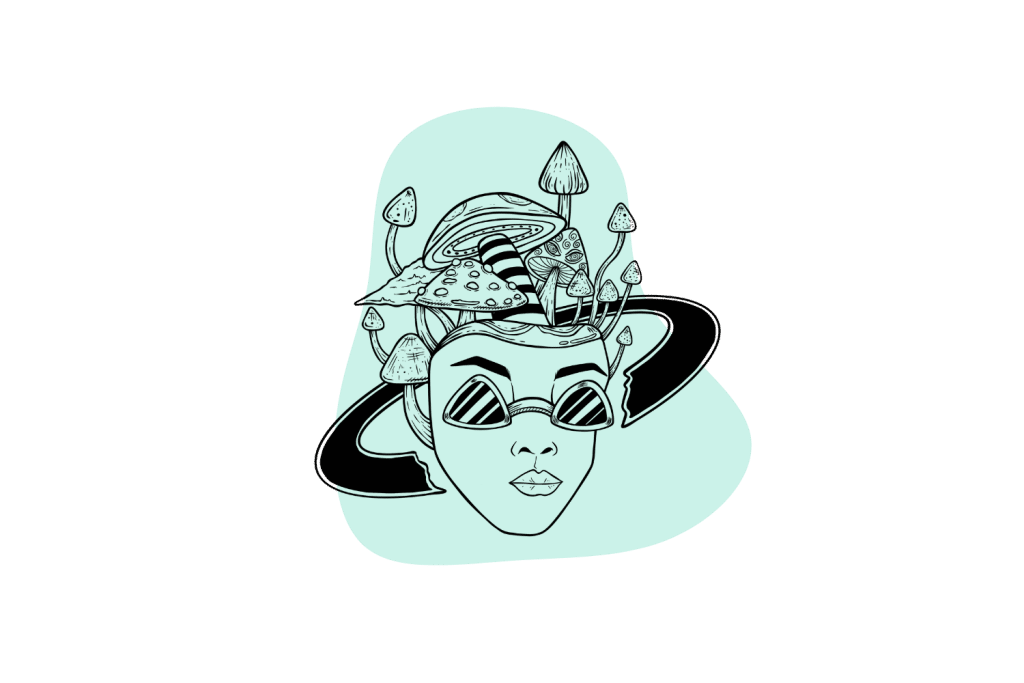
While you can negate much of the risk through the checklist above, it’s always there. Many people will try and claim bad experiences are ultimately good because you can learn more from them.
This may have been true for their experience, but each person is different, which is not always the case. If you already suffer from extreme anxiety, the feeling of being on psychedelics can be overwhelming and may trigger a panic attack.
A trip sitter will likely help to navigate this, and you might learn a lot from it — including how to avoid it. However, especially if you’re alone, this may not be the case, and you might just have a terrible panic attack accompanied by grotesque, horrific hallucinations.
The latter is not as common as the former, but you should be aware the chance for both is contained within the mushroom. Exploring a psychedelic experience is not without risk simply because it’s not likely to lead to death.
Always approach with caution.
Looking Forward: Are Magic Mushrooms the Next Generation of Anxiety Treatment?
The answer to this question is subjective based on each person’s experience. What is clear is that psilocybin-assisted psychotherapy shows tremendous promise — even in situations involving existential anxiety.
We don’t have enough research to know whether the psychedelic or the therapy is the crucial part, but things are changing quickly.
Here’s a sample of just a few of the clinical trials currently recruiting or already underway involving the use of psilocybin for treating anxiety:
- Psilocybin Therapy for Depression and Anxiety in Parkinson’s Disease
- Psilocybin for Psychological and Existential Distress in Palliative Care
- Evaluating the Feasibility, Safety, and Efficacy of Psychotherapy-Assisted Psilocybin for Treatment of Severe OCD
- Psilocybin for Treatment of Obsessive Compulsive Disorder
Now, it’s on us to ensure we usher in the psychedelic future responsibly, taking into account each person’s specific needs. There is no blanket fix for something as complicated as anxiety, and while there’s a promise with psychedelics, nothing is yet definitive.
Resources
- Ross, S., Bossis, A., Guss, J., Agin-Liebes, G., Malone, T., Cohen, B., … & Schmidt, B. L. (2016). Rapid and sustained symptom reduction following psilocybin treatment for anxiety and depression in patients with life-threatening cancer: a randomized controlled trial. Journal of psychopharmacology, 30(12), 1165-1180.
- Hutten, N. R., Mason, N. L., Dolder, P. C., & Kuypers, K. P. (2019). Motives and side-effects of microdosing with psychedelics among users. International Journal of Neuropsychopharmacology, 22(7), 426-434.
- Szigeti, B., Kartner, L., Blemings, A., Rosas, F., Feilding, A., Nutt, D. J., … & Erritzoe, D. (2021). Self-blinding citizen science to explore psychedelic microdosing. Elife, 10, e62878.
- Griffiths, R. R., Johnson, M. W., Carducci, M. A., Umbricht, A., Richards, W. A., Richards, B. D., … & Klinedinst, M. A. (2016). Psilocybin produces substantial and sustained decreases in depression and anxiety in patients with life-threatening cancer: A randomized double-blind trial. Journal of psychopharmacology, 30(12), 1181-1197.
- Griffin, C. E., Kaye, A. M., Bueno, F. R., & Kaye, A. D. (2013). Benzodiazepine pharmacology and central nervous system–mediated effects. Ochsner Journal, 13(2), 214-223.
- Olsen, R. W., & Liang, J. (2017). Role of GABAA receptors in alcohol use disorders suggested by chronic intermittent ethanol (CIE) rodent model. Molecular Brain, 10(1), 1-20.
- Griffiths, R. R., Richards, W. A., Johnson, M. W., McCann, U. D., & Jesse, R. (2008). Mystical-type experiences occasioned by psilocybin mediate the attribution of personal meaning and spiritual significance 14 months later. Journal of psychopharmacology, 22(6), 621-632.
- Lowe, H., Toyang, N., Steele, B., Grant, J., Ali, A., Gordon, L., & Ngwa, W. (2022). Psychedelics: Alternative and Potential Therapeutic Options for Treating Mood and Anxiety Disorders. Molecules, 27(8), 2520.
- Johnson, M. W., Griffiths, R. R., Hendricks, P. S., & Henningfield, J. E. (2018). The abuse potential of medical psilocybin according to the 8 factors of the Controlled Substances Act. Neuropharmacology, 142, 143-166.

